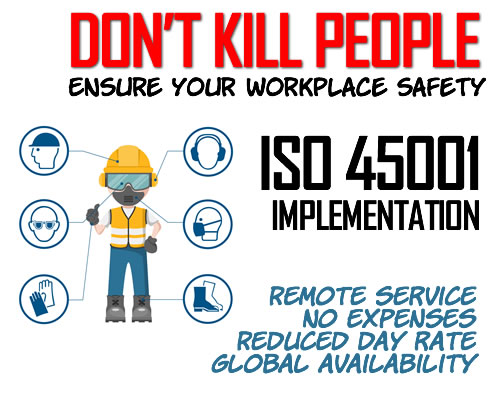Strap in, because I am about to say something that will ensure I never get invited to all those meetings I’m already not being invited to.
History Lesson
In the original ISO 9001:1987 standard, the concept of “improvement” — in any context whatsoever — was largely absent. This is because the standard was based on the original MIL-Q-9858 standard, which was simply a contractual obligation for suppliers to meet the quality requirements of the customer. Whether you improved your QMS or not was on the minds of the authors of the MIL spec, and so it never appeared in the 1987 edition.
In 1994, BSI leaned in and added some minor changes to the standard, including one passing reference to the idea of improvement. In the clause on “Management Representative,” BSI added the following requirement for the management rep:
… reporting on the performance of the quality system to the supplier’s management for review and as a basis for improvement of the quality system.
But that was it. When ISO decided to jettison the old MIL and BSI standard entirely, and start from scratch with ISO 9001:2000, it introduced the concept of improvement with a far greater emphasis. In entire clause 8 was added, entitled “Measurement, Analysis and Improvement.” That included requirements to support this idea, including one that demanded user organizations implement “processes needed to continually improve the effectiveness of the quality management system.” The word “improvement” appears over a dozen times, including this additional clause:
The organization shall continually improve the effectiveness of the quality management system through the use of the quality policy, quality objectives, audit results, analysis of data, corrective and preventive actions and management review.
And this is where ISO started to go astray, and led to our current situation where ISO TC 176 — the authors of ISO 9001 — have lost the plot.
Plot? What Plot?
You see, it was previously understood that quality meant meeting customer requirements. The entire purpose of QMS standards, dating back to the late 1950s with MIL-Q-0958 through AQAP-1, the UK’s Ministry of Defense variants, and BSI’s original attempts (such as BS5179, BS5750, and BS9000), was aimed at ensuring a manufacturing company could produce parts that met a customer’s requirements.
That worked for thirty years.
With the inclusion of an entire clause on “continual improvement” in ISO 9001:2000, the authors thought they were advancing the quality management profession, but, in fact, set the stage for a subsequent reversal, pushing the quality field into the disconnected, disjointed, and frankly distracted state that we find ourselves in now.
IT sounded great, though, right? I mean, who can argue against improvement? Even suggesting such a thing is now nearly seen as blasphemous.
But let’s pause for a moment and remember the point of QMS standards. Again, for thirty years, they were focused solely on ensuring the quality of the product against requirements. With the 2000 edition, ISO was trying to expand its market for ISO 9001, and opted to claim — poorly — that the widget-making standard of ISO 9001 could now be applied to service organizations. Suddenly, insurance companies and banks and training organizations were told that their ideas of quality were the same as other companies that make brake pads and baby bottles. It was a clumsy effort driven largely by ISO’s financial goals, since ISO did not want to potentially cannibalize its flagship standard by creating an alternate QMS standard for service companies. It thought ISO 9001 could satisfy everyone, everywhere, all at once.
So dedicated to this idea, ISO actually set performance goals on TC 176, one of which was to “reduce the proliferation of sector-specific QMS standards” that might compete with ISO 9001. We all know how that ended up. (See AS9100, IATF 16949, ISO 13485, etc.)
In my view, that was a huge mistake, but that’s the topic of another article. But this mixing of the needs of “hard” product manufacturers with “soft” service providers got the authors muddled up and that confusion led them down some strange paths. One of these was adding improvement to the mix.
You see, improvement is not something you can readily verify in a conformity assessment audit, nor can you prove it in any repeatable, reliable manner internally. The idea of “what constitutes improvement” is subjective. I often joke in my training classes that if a company’s bad products killed 100 people last year, but only killed 99 people this year, that would legitimately be counted as an improvement. The corpses, meanwhile, might disagree.
This created the first of ISO 9001’s subjective requirements, which have no place in a standard intended for third-party verification through conformity assessment. And that was the primary reason ISO 9001 existed — to prove to customers that a supplier’s QMS could reliably produce quality products because no one trusted the suppliers’ self-declarations that their quality was fine.
Now, however, both users and auditors were tasked with, respectively, implementing and auditing something that really couldn’t be proved one way or the other. For many decades, auditors just brushed past the clause, giving users a free pass. Those auditors who insist they were auditing it correctly were, when one presses, doing so based on their entirely personal and subjective ideas on what “improvement” even means.
There are only a few ways to verify improvement. One way is to see if defect rates are going up or down. Another might be analyzing returns, corrective actions, etc. But even these were not fully indicative of improvement. For example, defect rates and returns might be going down because the company’s customers stopped buying the company’s products. Auditors never dug deep enough to find out.
Intangibles FTW
So why did that “ruin” ISO 9001, as I am suggesting? Because it set the stage for a complete rebooting of what “quality” means. Now, quality no longer means meeting customer requirements — something that can be verified through objective evidence. Instead, quality is a cultural phenomenon, something intangible, a way of thinking, a mood, even a vibe.
But how do you objectively audit vibes? Hint: you can’t.
Thus, in 2015, ISO TC 176 injected more intangibles into the standard, all while insisting this reflected a change in the quality management profession itself. With ISO 9001:2015, the standard added concepts like an “emotionally protective” workplace, “issues,” and the much-criticized — and entirely made-up — “risk-based thinking.” Worse, ISO 9001:2015 stripped out all the hard requirements, like documents and records, allowing the end user to do whatever they want. This was another decision driven not by changes in the quality profession, but ISO’s sales goals. It was chasing lazy dumb users and wanted to make sure they would buy the standard and then not have to do any work afterward.
Gone was any ability to verify these concepts during conformity assessment audits via objective evidence. Now, auditors would sit down and just “get a sense” if the company complied with the spirit of the standard, since the letter of the standard was empty.
An entire generation of auditors was raised on this erroneous approach and, to this day, have no idea what they are doing makes no sense. In the end, ISO 9001 certificates were issued to companies whose products did not meet customer requirements but who had smooth-talking company reps who could hoodwink auditors into thinking some intangible “culture” ensured equally intangible “improvement.”
Now we see the DIS of ISO 9001:2026, and the problem has grown exponentially worse. ISO has so lost the plot of what a QMS standard is supposed to do, they have added whatever feel-good, intangible nonsense their BSI committee members — and their approved lackeys — can dream up. The DIS adds ideas like a “quality culture,”
Sure, we can all sit around a hip Soho cafe, wear French berets and listen to hip jazz while we discuss how all of those things affect quality, since injured or sad workers can’t be expected to make a quality product. But that’s divination— an assumption about something which may happen in the future, maybe, perhaps — and not based on facts. We are now implementing quality management systems via Tarot cards and crystal balls, rather than hard data.
TC 176 and its apologists — nearly all from the private consulting industry — insist this is the future. They gleefully announce that ISO 9001 has moved into managing culture and thinking and attitude, ignoring the facts that (a) none of those are auditable and (b) they may have zero effect on the quality of things being sold.
Thinking-Based Thinking
Worse, ISO 9001 is now a dumping ground for all sorts of off-topic concepts, like climate change, discrimination, finances, “opportunity-based thinking,” and health and safety. Gone are the days when ISO was worried about cannibalizing its own products, since we have specific ISO standards for all of those things. As its flagship product, ISO 9001 must now encompass every possible thing a person can think of. AS9100 is on board with this, too, forgetting that the standard is supposed to make sure we build airplanes that don’t fall out of the sky. That standard is adding clauses on “quality of work life,” “personnel safety,” and “cybersecurity.”
So, now, quality management systems are performative. They are like interpretive dance or slam poetry or standup comedy. It may all be entertaining, but none of it is auditable. Companies will be able to produce defective products and maintain certification, provided they can give off a good vibe to an auditor who might drop by. The concepts of objective evidence as a basis for an audit report or ensuring products meet requirements are buried under layers of nonsensical intangibles.
This is what happens when unqualified but over-authorized consultants are allowed total and complete control over the development of standards, and actual user organizations are prohibited from participating. It’s also a product of BSI’s unique influence: BSI sells both standards and audits, and so uses its position to alter the text of standards to maximize its sales potential.
The End Result
It won’t work. ISO 9001:2026 is on track to be the worst version of ISO 9001 ever. Stakeholders — and entire countries — are calling on TC 176 to reverse course and stop this madness. ISO is refusing to listen, encircling TC 176 in a feedback-proof bubble so that it can get the standard to market as fast as possible. The salaries of executives at bodies like ISO, ANSI, BSI, etc. need the boost in revenue to justify salaries and bonuses.
The inevitable result will be a rejection of ISO management system standards and a shift towards free, open-source standards like Oxebridge Q001. These will put back the hard requirements, remove the intangibles, and get back to the original intent of standards and associated certifications. ISO will likely try to sue to stop this effort, but as more and more entities see the success of Q001, they are likely to offer equivalent open source standards.
ISO will have emotionally-protected itself into irrelevance.
Ironically, this is not improvement.
Christopher Paris is the founder and VP Operations of Oxebridge. He has over 35 years’ experience implementing ISO 9001 and AS9100 systems, and helps establish certification and accreditation bodies with the ISO 17000 series. He is a vocal advocate for the development and use of standards from the point of view of actual users. He is the writer and artist of THE AUDITOR comic strip, and is currently writing the DR. CUBA pulp novel series. Visit www.drcuba.world








